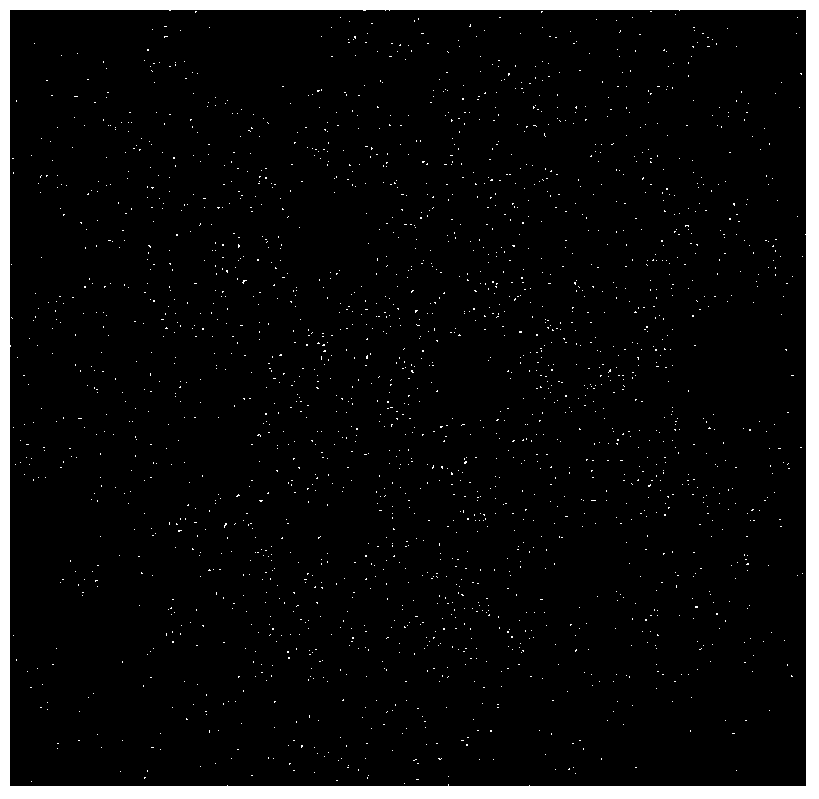Method for detecting methyl mercury ions
A detection method, the technology of methylmercury, applied in the field of nanotechnology and analysis and detection, can solve problems such as the inability to realize a single identification of methylmercury ion response, and achieve good practical application prospects, high detection sensitivity, and simple operation methods
- Summary
- Abstract
- Description
- Claims
- Application Information
AI Technical Summary
Problems solved by technology
Method used
Image
Examples
Embodiment 1
[0041] Example 1 Preparation of silver nanoparticles with DNA as template:
[0042] Prepare the solution required for the preparation of silver nanoparticles: dilute the T base-rich DNA stock solution consisting of 25 bases with water to obtain a 5 μM / L solution, and prepare 1 mM / L silver nitrate (AgNO 3 ) solution, prepare 10mM / L sodium borohydride (NaBH 4 ) solution, prepare 10mM / L Tris-HNO 3 The buffer solution (pH=7.4) is ready for use;
[0043] Add 490 μL of Tris-HNO to a 1.5 mL centrifuge tube 3 Buffer solution (10mM / L); add 5 μL of the prepared 5 μM / L DNA solution and shake well; take 5 μL of the prepared 1 mM / L silver nitrate solution, add it, shake well, and let it stand for 10 minutes (so that the silver ions and DNA fully function); add 1 μL of 10mM / L sodium borohydride solution for reduction, and shake the centrifuge tube vigorously. Due to the interaction between the silver ion and the base on the DNA and then adsorbed to the DNA, silver nanoparticles with DNA...
Embodiment 2
[0045] Example 2 The quenching effect of silver nanoparticles formed with DNA as a template and free silver nanoparticles on fluorescein fluorescence:
[0046] Take Tris-HNO 3 Add 480 μL of buffer solution (10 mM / L, pH=7.4) into a fluorescent cell with a volume of 1 mL; add 5 μL of fluorescein-labeled T base-rich DNA solution (5 μM / L) into the fluorescent cell, shake well ; Then add 10 μL of different concentrations of silver ion solution or 10 μL Tris-HNO to the fluorescent cell 3 Buffer solution, so that the final concentrations of silver ions are 0, 0.05, 0.2, 0.5, 1.0, 2.0, 4.0, 8.0, 15.0μM, shake well, let stand for 10 minutes; finally add 2μL sodium borohydride solution (10mM / L) to reduce After shaking, place it for 20 minutes, so that the reaction is fully carried out, test and record its fluorescence emission spectrum, and obtain the quenching of the fluorescence of fluorescein by adding different concentrations of silver ions to the DNA template silver nanoparticles....
Embodiment 3
[0049] Example 3 Investigate the ultraviolet-visible absorption spectrum of this detection method to the response mechanism of divalent mercury ions and methylmercury ions:
[0050] (1) Take Tris-HNO 3 Add 480 μL of buffer solution (10 mM / L, pH=7.4) into the absorption pool with a volume of 1 mL; add 5 μL of T base-rich DNA solution (5 μM / L) containing fluorescein labeled into the absorption pool, shake well , to test its absorption spectrum;
[0051] (2) Make three parallel experimental groups: the first group: after adding 5 μ L of silver nitrate solution (1 mM / L) to the solution obtained in step (1), shake it up and let it stand for 10 minutes, then add 1 μ L of sodium borohydride solution ( 10mM / L) for reduction, reacted for 20 minutes, and tested its absorption spectrum; the second group: After adding 5 μL silver nitrate solution (1mM / L) to the solution obtained in step (1), shake it and let it stand for 10 minutes, then add 5 μL Methylmercury ion solution (1mM / L), fina...
PUM
| Property | Measurement | Unit |
|---|---|---|
| diameter | aaaaa | aaaaa |
Abstract
Description
Claims
Application Information
 Login to View More
Login to View More - R&D
- Intellectual Property
- Life Sciences
- Materials
- Tech Scout
- Unparalleled Data Quality
- Higher Quality Content
- 60% Fewer Hallucinations
Browse by: Latest US Patents, China's latest patents, Technical Efficacy Thesaurus, Application Domain, Technology Topic, Popular Technical Reports.
© 2025 PatSnap. All rights reserved.Legal|Privacy policy|Modern Slavery Act Transparency Statement|Sitemap|About US| Contact US: help@patsnap.com



